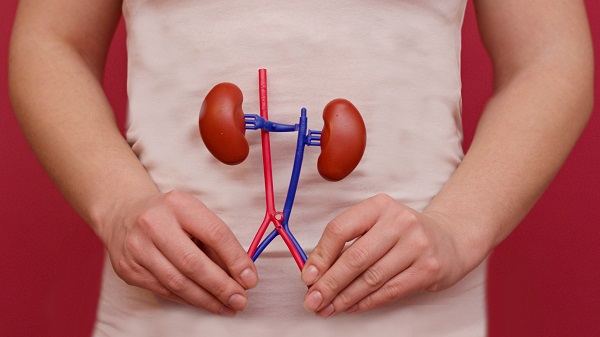Type 2 diabetes is the world’s fastest-growing chronic condition, but its first-line treatment hasn’t changed in decades. A new clinical trial of a class of drugs called sodium-glucose cotransporter-2 (SGLT2) inhibitors hopes to change that.
George Institute Australia Executive Director and UNSW Professor of Medicine Bruce Neal and colleagues will explore if SGLT2 inhibitors can help newly diagnosed type 2 diabetes patients avoid kidney complications down the track.
The trial, dubbed SMARTEST, comes off the back of two successful international SGLT2 inhibitor studies also led by the George Institute.

SGLT2 inhibitors were developed as diabetes drugs because they force glucose molecules out of blood and into urine. This not only lowers blood sugar levels, it also helps with weight loss.
An SGLT2 inhibitor named canagliflozin was the focus of the CANVAS program: a pair of trials led by Neal that set out to show the drug could safely lower blood glucose levels in people with type 2 diabetes who were at high risk of cardiovascular disease.
“But a couple of things came out of CANVAS which were really quite surprising,” Neal explains.
Participants taking canagliflozin were less likely to die from cardiovascular conditions or suffer non-fatal heart attacks and strokes than their placebo-popping counterparts.
Their kidneys, too, seemed to work better. This is important in the context of diabetes, where persistent elevated glucose levels damage small renal blood vessels. Such damage means kidneys can no longer clean blood properly, and kidney disease – the most common cause of kidney failure – develops.
So the CANVAS program led to a second trial: CREDENCE. Canagliflozin was, once again, given to people who had type 2 diabetes, but this time, trial participants had chronic kidney disease too. Compared to a placebo, the drug cut the risk of renal failure or death by 30%.
“That study was also a profound success – so much so that it was stopped early,” Neal says.
The question remained: if SGLT2 inhibitors help reduce heart and kidney disease risk in established diabetes, can they have a preventative effect in people who have been recently diagnosed?
This is the question SMARTEST hopes to answer. It will compare the SGLT2 inhibitor dapagliflozin against the current first-line diabetes drug treatment, metformin.
“With diabetes, kidney function starts to decline really from the moment you’re diagnosed,” Neal says. “Metformin doesn’t change this decline much. But if we give people SGLT2 inhibitors, we think we can get their kidney function to stay steady or decline at a much slower rate.”
The steepness of this decline strongly predicts a person’s need for dialysis in the decades to come.
SMARTEST hopes to recruit participants from an especially high-risk population: Aboriginal Australians. Aboriginal people are four times as likely to develop, be hospitalised for and die from type 2 diabetes and kidney disease as non-Indigenous Australians.
“We’re consulting with the Aboriginal community, researchers and renal physicians to understand whether this would be a good proposition,” Neal says.
“The initial response is actually pretty positive. To focus the project on a high-burden, high-need group we think will be really worthwhile.”
Even though SMARTEST won’t have the international range of CANVAS and CREDENCE, cross-border collaboration is invaluable when it comes to clinical trials, Neal says. “When you agree to put all your datasets together in one big pool, you can then do much more sophisticated analyses.”
To this end, he and his crew are also collaborating with a Swedish group, who are conducting a similar trial.
And while data sharing requires trust and goodwill, Neal says it’s worth it: “I think the most important thing I ever learned as a scientist was you should share stuff. Just give it away. Because 99% of the time, it comes back in spades.”
Updated 4 years ago
